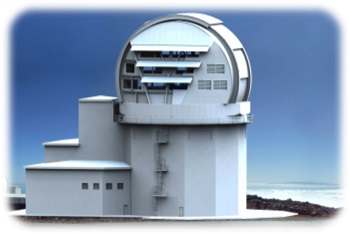By Alexander Chilton

Image Credit: Tatiana Shepeleva | Shutterstock.com
 Artist's impression of telescope
Artist's impression of telescope
A consortium of universities, including Queens University Belfast and the University of Sheffield, are currently working on building cameras for the revolutionary £344 million telescope. The solar telescope will be situated on the Haleakala Mountain in Maui, Hawaii and will be launched in 2019.
It is hoped that The Daniel K Inouye Solar Telescope will provide a new and extraordinary insight into the physical behaviour of the sun’s surface and atmosphere, as well as being used to improve the forecasting of weather hazards in space.
The DKIST has been designed with a primary mirror measuring 4 metres in diameter, which will enable the telescope to view an unprecedented level of detail on the surface of the Sun – the equivalent of being able to clearly view a £1 coin from 100 kilometres away.
It’s also a great facility for early career scientists in the UK and will pave the way for Sheffield to remain at the forefront of solar plasma research.
Professor Robertus von Fay-Siebenburgen, Head of SP2RC at the University of Sheffield
The researchers involved in this project hope that that the DKIST will be able to address fundamental questions in the field of solar physics using high-speed (sub-second timescales) spectroscopic and magnetic measurements of the various layers of the Sun’s atmosphere (solar chromosphere, photosphere, and corona).
Professor Michail Balikhin from the University of Sheffield commented: “The development of this telescope provides great potential for us to make earlier forecasts of space weather hazards, such as identifying solar winds which can cause huge disruption to life on Earth. Our Space System Laboratory in Sheffield has a well-established track record in space weather forecasting using a spacecraft situated about 1.5 million km from our planet. At the moment this enables us to identify space weather, such as solar wind velocities, approximately one hour before they reach Earth, but once this telescope is built we may be able to significantly extend this time.”
Dr Viktor Fedun from the University’s Solar Wave Theory Group added: “The new high-resolution cameras used by the telescope will provide an unprecedented amount of solar image data. Researchers at Sheffield will use their leading expertise in numerical modelling of plasma processes to develop new algorithms and numerical techniques to process the data observed from the new telescope which will be really impactful to the UK science community and beyond.”
Professor Robertus von Fay-Siebenburgen (a.k.a Erdelyi), Head of SP2RC (Solar Physics and Space Plasma Research Centre) at the University of Sheffield, said: “This is a fantastic opportunity to significantly improve the forecasting of Space Weather. In 1989 a particularly large amount of energetic solar plasma material was ejected from the Sun towards the Earth, which damaged satellites and electrical transmission facilities, as well as caused disruption to communications systems. The understanding and prediction of space weather is vitally important in the age of human exploration of the Solar System and the development of this new telescope will enable us to predict space weather events much earlier.”
The project has been primarily funded by the US National Science Foundation. The consortium will not only be involved in the construction and delivery of the cameras but will also support the UK solar physics community in their use of DKIST by providing a set of processing tools for DKIST data, synthetic observations to validate diagnostic approaches and support for developing observing proposals.
Some images of the telescope being built can be accessed here.